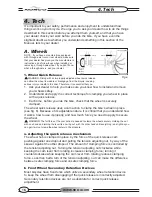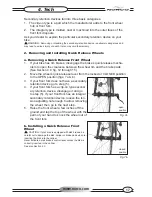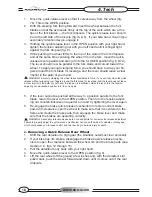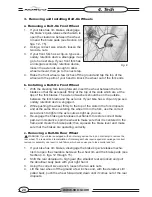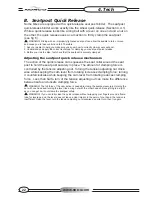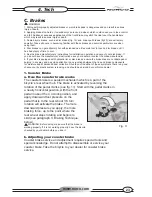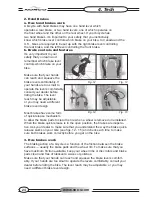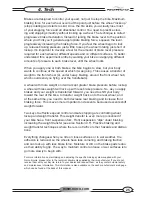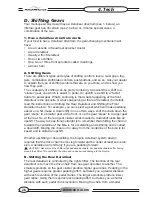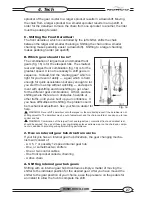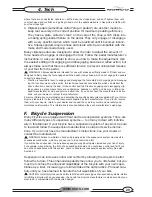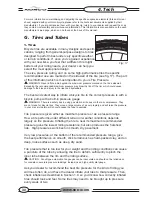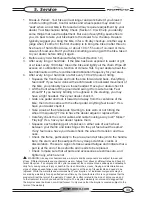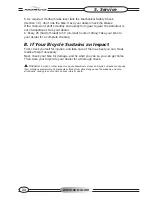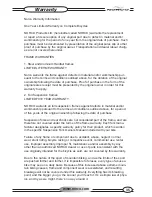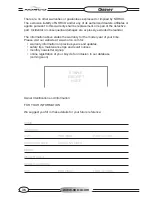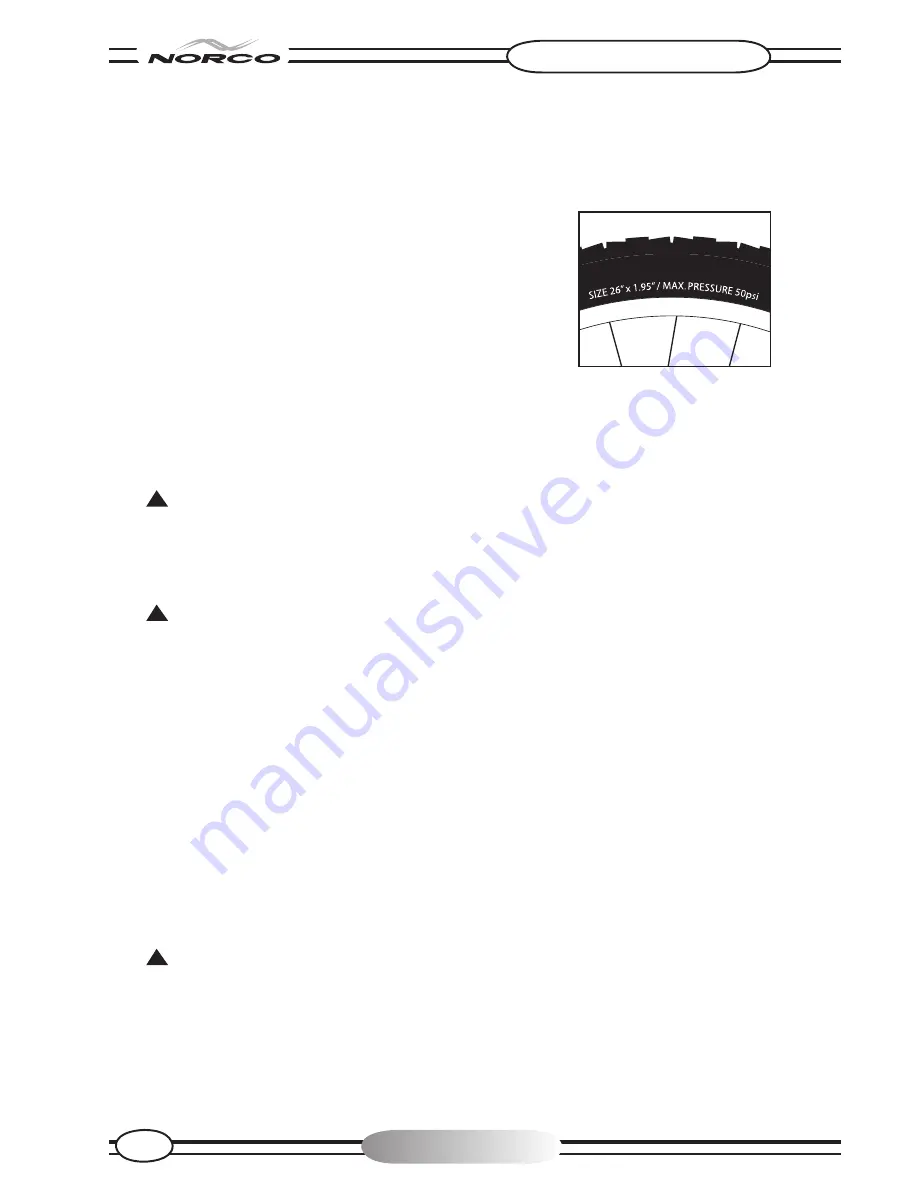
www.norco.com
30
For more information on maintaining and adjusting the specific suspension elements (fork and/or rear
shock) supplied with your Norco bicycle, please refer to the technical documents supplied by their
manufacturer. If you did not receive them with your bicycle, return to your dealer and request them, as
they contain crucial safety and maintenance information. This information is also available on the each
manufacturer’s web page, which can be found at the back of this manual.
G. Tires and Tubes
1. Tires
Bicycle tires are available in many designs and specifi-
cations, ranging from general-purpose designs to tires
designed to perform best under very specific weather
or terrain conditions. If, once you’ve gained experience
with your new bike, you feel that a different tire might
better suit your riding needs, your dealer can help you
select the most appropriate design.
The size, pressure rating, and on some high-performance tires the specific
recommended use, are marked on the sidewall of the tire (see fig. 17). The part
of this information which is most important to you is Tire Pressure.
WARNING: Never inflate a tire beyond the maximum pressure marked on the tire’s sidewall.
Exceeding the recommended maximum pressure may blow the tire off the rim, which could cause
damage to the bike and injury to the rider and bystanders.
The best and safest way to inflate a bicycle tire to the correct pressure is with a
bicycle pump with a built-in pressure gauge.
WARNING: There is a safety risk in using gas station air hoses or other air compressors. They
are not made for bicycle tires. They move a large volume of air very rapidly, and will raise the pressure
in your tire very rapidly, which could cause the tube to explode.
Tire pressure is given either as maximum pressure or as a pressure range.
How a tire performs under different terrain or weather conditions depends
largely on tire pressure. Inflating the tire to near its maximum recommended
pressure gives the lowest rolling resistance; but also produces the harshest
ride. High pressures work best on smooth, dry pavement.
Very low pressures, at the bottom of the recommended pressure range, give
the best performance on smooth, slick terrain such as hard-packed clay, and on
deep, loose surfaces such as deep, dry sand.
Tire pressure that is too low for your weight and the riding conditions can cause
a puncture of the tube by allowing the tire to deform sufficiently to pinch the
inner tube between the rim and the riding surface.
CAUTION: Pencil type automotive tire gauges can be inaccurate and should not be relied upon
for consistent, accurate pressure readings. Instead, use a high quality dial gauge.
Ask your dealer to recommend the best tire pressure for the kind of riding you
will most often do, and have the dealer inflate your tires to that pressure. Then,
check inflation as described in Section 1.C so you’ll know how correctly inflated
tires should look and feel. Some tires may need to be brought up to pressure
every week or two.
Fig. 17
4. Tech
Summary of Contents for multi-speed bicycles
Page 1: ...for multi speed bicycles 7th Edition www norco com ...
Page 2: ......

